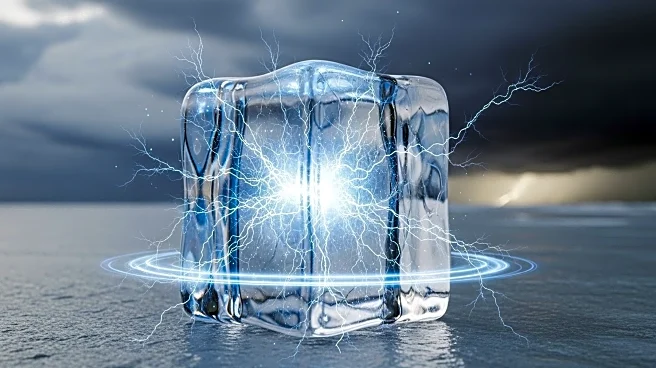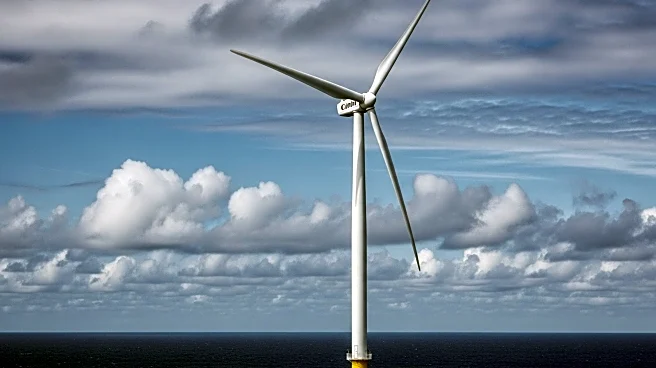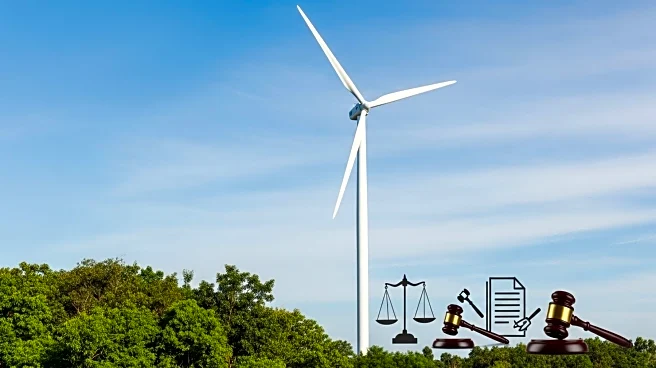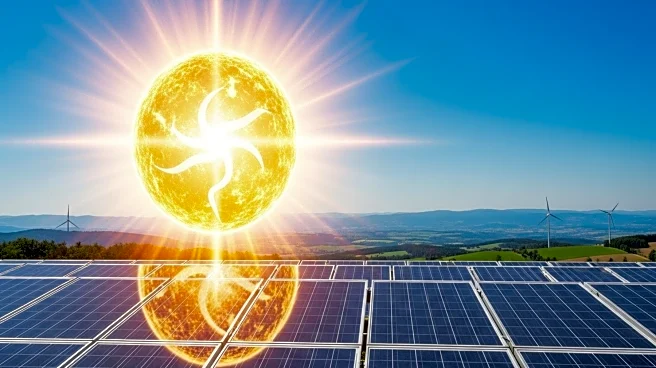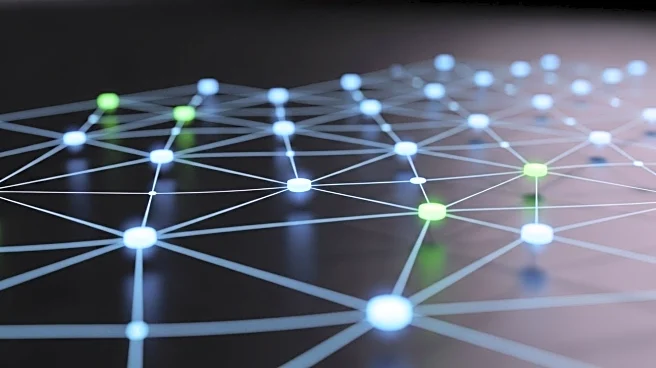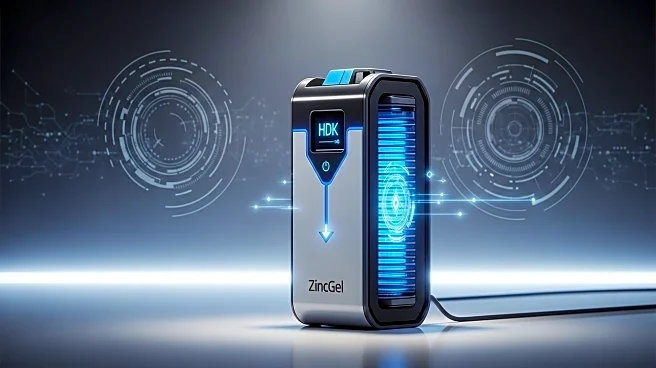What is the story about?
What's Happening?
Scientists have discovered that ordinary ice possesses remarkable electromechanical properties, allowing it to generate electricity when stressed. This phenomenon, known as flexoelectricity, occurs when ice is bent, stretched, or twisted, as detailed in a Nature Physics paper. The study, led by Xin Wen, a nanophysicist at Institut Catala de Nanociencia i Nanotecnologia, reveals that ice's electric properties change with temperature, suggesting potential applications in both fundamental science and technology. The research challenges previous assumptions about ice's inability to generate piezoelectricity due to its molecular structure. Instead, the study found that flexoelectricity can exist in materials of any symmetry, including ice, which can produce an electric charge when manipulated. This discovery could have implications for understanding natural phenomena like thunderstorms, where ice particles generate electricity.
Why It's Important?
The discovery of flexoelectricity in ice could have significant implications for various fields, including renewable energy and meteorology. By understanding how ice generates electricity, researchers may develop new technologies that harness this property for energy generation. This could lead to innovative approaches in creating sustainable energy solutions, potentially impacting industries reliant on renewable energy sources. Additionally, the findings offer insights into natural processes, such as the formation of lightning during thunderstorms, which could improve weather prediction models and enhance safety measures. The ability to generate electricity from ice also positions it alongside advanced electroceramic materials used in sensors and capacitors, suggesting potential applications in electronics and environmental monitoring.
What's Next?
Further research is needed to explore the practical applications of flexoelectricity in ice. Scientists aim to revisit ice-related processes in nature to identify any overlooked consequences of ice flexoelectricity. This could lead to advancements in understanding weather phenomena and developing new technologies for energy generation. The study's findings will require additional scrutiny to validate the potential uses of stressed ice in real-world applications. Researchers may also investigate the formation of ferroelectric layers at low temperatures, which could offer additional insights into ice's electric properties and their implications for technology and natural processes.
Beyond the Headlines
The discovery of flexoelectricity in ice raises questions about the ethical and environmental implications of harnessing natural phenomena for energy generation. As researchers explore the potential applications of this property, considerations regarding the impact on ecosystems and climate change may arise. Additionally, the study highlights the importance of interdisciplinary research in uncovering new scientific insights, emphasizing the need for collaboration across fields to address complex challenges. The findings also underscore the ongoing exploration of common materials like ice, revealing how much remains to be learned about the natural world and its potential contributions to technology and sustainability.
AI Generated Content
Do you find this article useful?
